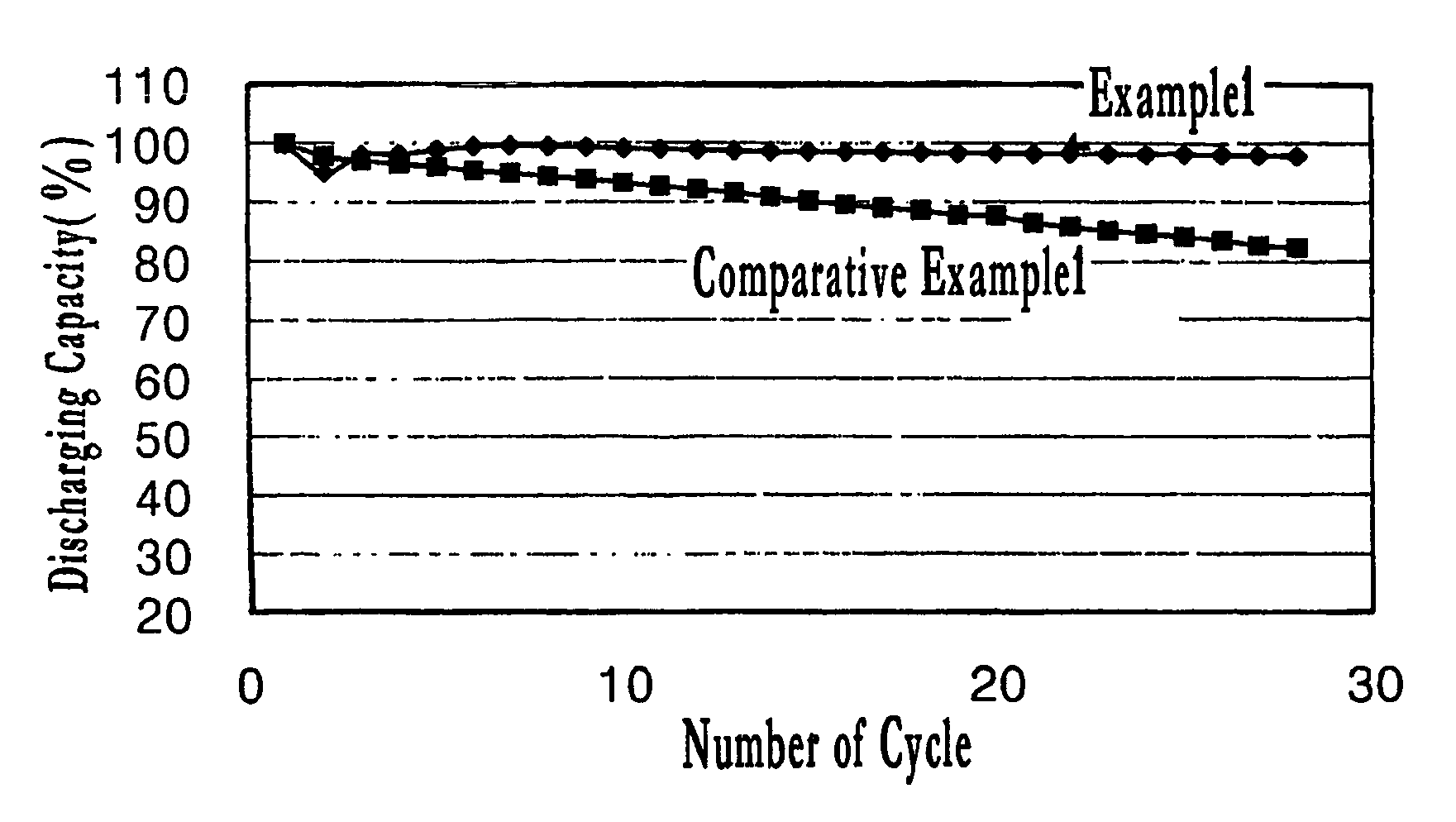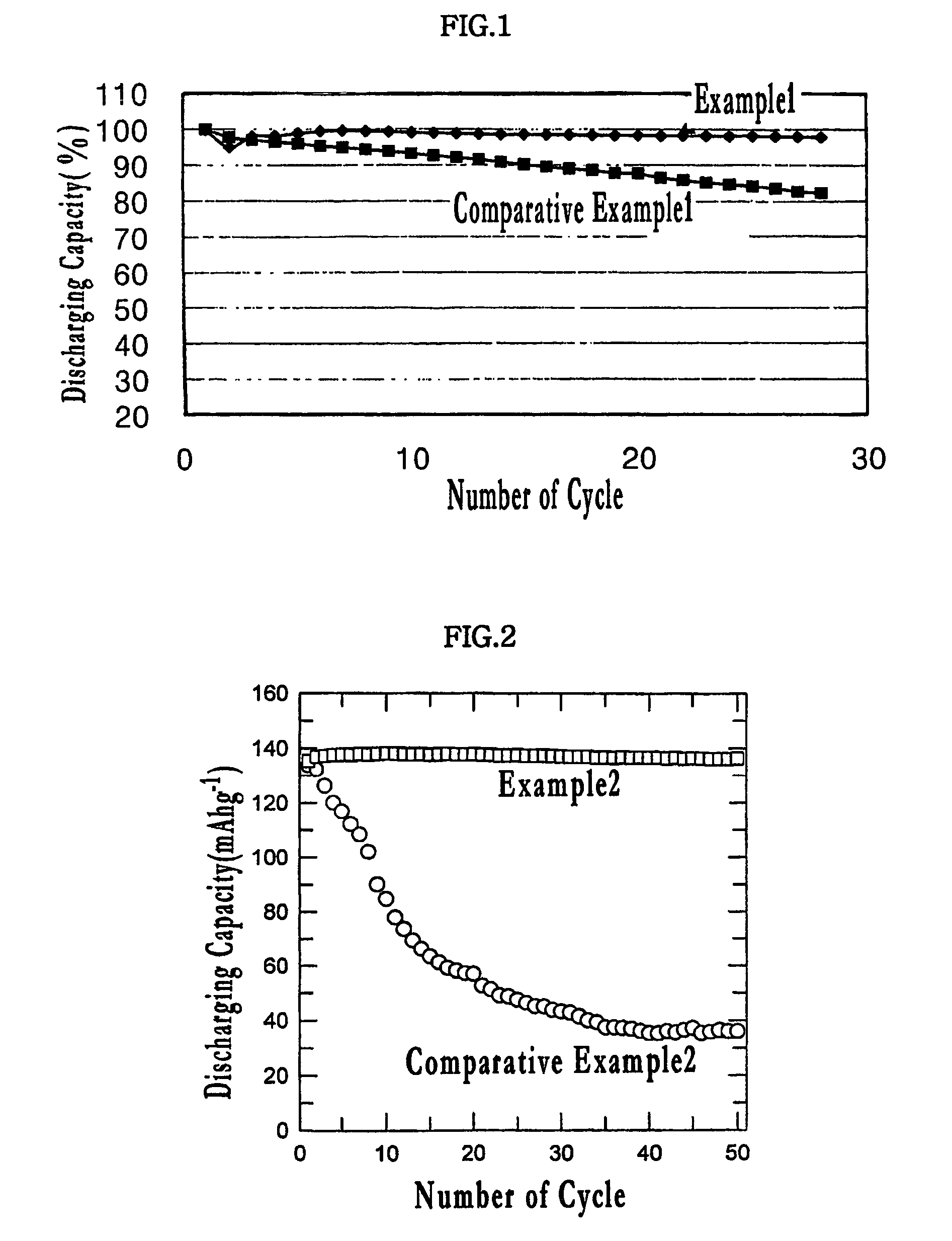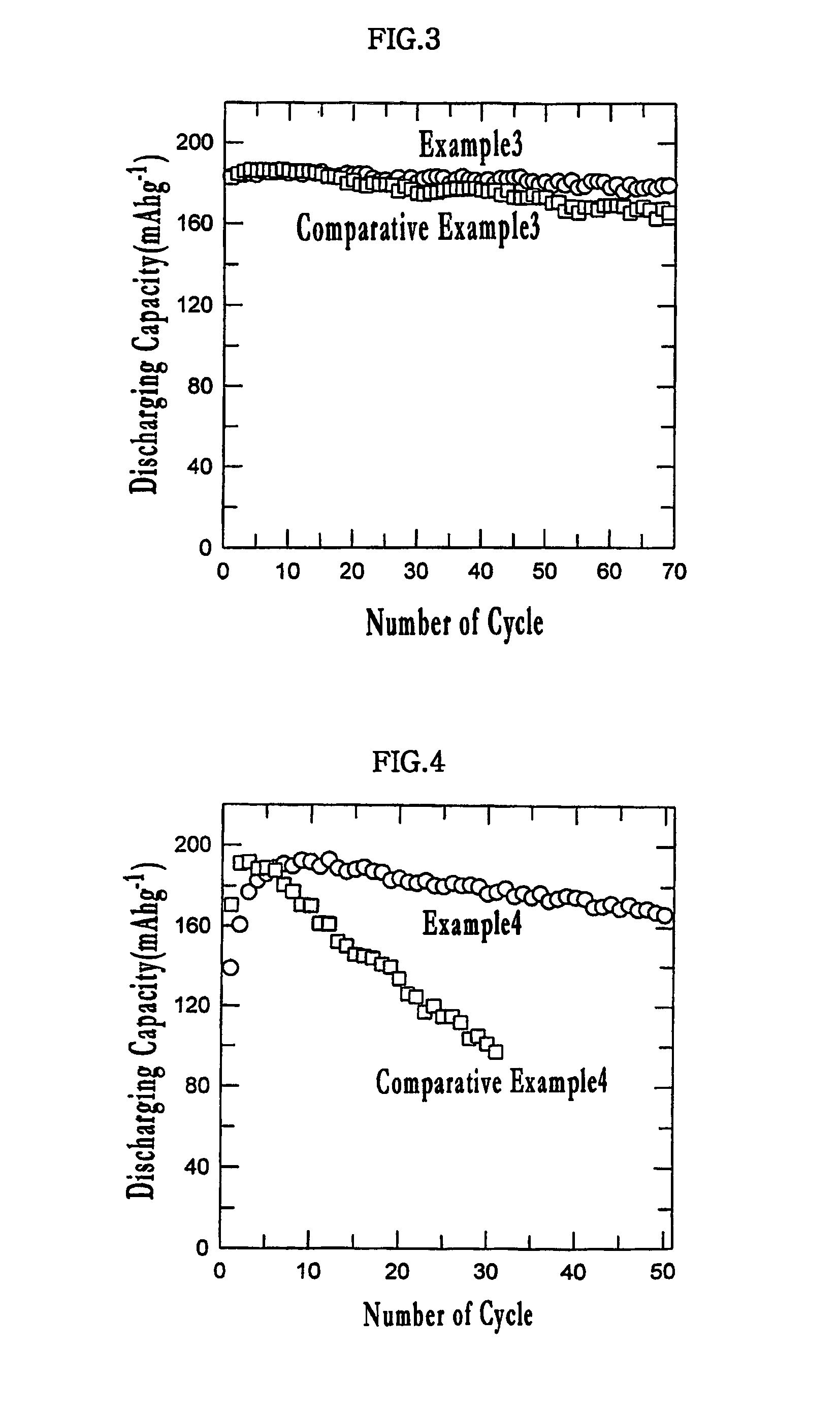Electrode active materials for lithium secondary batteries, method for preparing the same, and lithium secondary batteries using the same
a technology of active materials and lithium secondary batteries, which is applied in the direction of electrochemical generators, cell components, cell component details, etc., can solve the problems of increased internal resistance of batteries, shortened battery life, and deterioration of active materials, so as to inhibit the generation of gas inside the battery and inhibit the deterioration of battery performan
- Summary
- Abstract
- Description
- Claims
- Application Information
AI Technical Summary
Benefits of technology
Problems solved by technology
Method used
Image
Examples
example
Example 1
i) Preparation of Positive Electrode Active Material
[0044]0.1 g of zinc acetate (Aldrich) was dissolved in 5 g of distilled water, and 10 g of LiMn2O4 powder (Carus Corp., HU-1) was added thereto. After the mixture was mixed homogeneously, the mixture was subjected to sonication for 1 hour. Subsequently, the mixture was dried in a thermostatic oven of 120° C. for 10 hours to prepare a positive electrode active material.
ii) Manufacture of Positive Electrode
[0045]0.5 g of carbon black and 0.5 g of polyvinylidene fluoride were added to the positive electrode active material prepared in i), and mixed homogeneously. To the mixture, 5 g of N-methylpyrrolidone (NMP) was added. The resulting mixture was applied onto an aluminum foil having a thickness of 20 μm, dried at a temperature of 100° C. to manufacture a positive electrode.
iii) Manufacture of Coin Battery
[0046]The positive electrode manufactured in ii), lithium foil as a counter electrode, porous polyethylene membrane (Celga...
example 2
[0047]0.1 g of zinc acetate was dissolved in 5 g of distilled water, and 2.5 g of LiNi0.5Mn1.5O4 powder was added thereto. After the mixture was mixed homogeneously, the mixture was subjected to sonication for 1 hour. Subsequently, the mixture was dried in a in a thermostatic oven of 120° C. for 10 hours to remove water. The dried mixture was heat-treated and coated with ZnO to prepare a positive electrode active material.
[0048]A positive electrode and a coin battery were manufactured in the same manner as ii) and iii) of Example 1.
example 3
[0049]0.1 g of zinc acetate was dissolved in 5 g of methanol, and 2.5 g of LiMnO2 powder, which was synthesized at low temperature, was added thereto. After the mixture was mixed homogeneously, the mixture was subjected to sonication for 1 hour. Subsequently, the mixture was dried in a thermostatic oven of 120° C. for 10 hours to prepare a positive electrode active material.
[0050]A positive electrode and a coin battery were manufactured in the same manner as ii) and iii) of Example 1.
PUM
| Property | Measurement | Unit |
|---|---|---|
| oxidation/reduction potential | aaaaa | aaaaa |
| oxidation/reduction potential | aaaaa | aaaaa |
| particle size | aaaaa | aaaaa |
Abstract
Description
Claims
Application Information
 Login to View More
Login to View More - R&D
- Intellectual Property
- Life Sciences
- Materials
- Tech Scout
- Unparalleled Data Quality
- Higher Quality Content
- 60% Fewer Hallucinations
Browse by: Latest US Patents, China's latest patents, Technical Efficacy Thesaurus, Application Domain, Technology Topic, Popular Technical Reports.
© 2025 PatSnap. All rights reserved.Legal|Privacy policy|Modern Slavery Act Transparency Statement|Sitemap|About US| Contact US: help@patsnap.com



